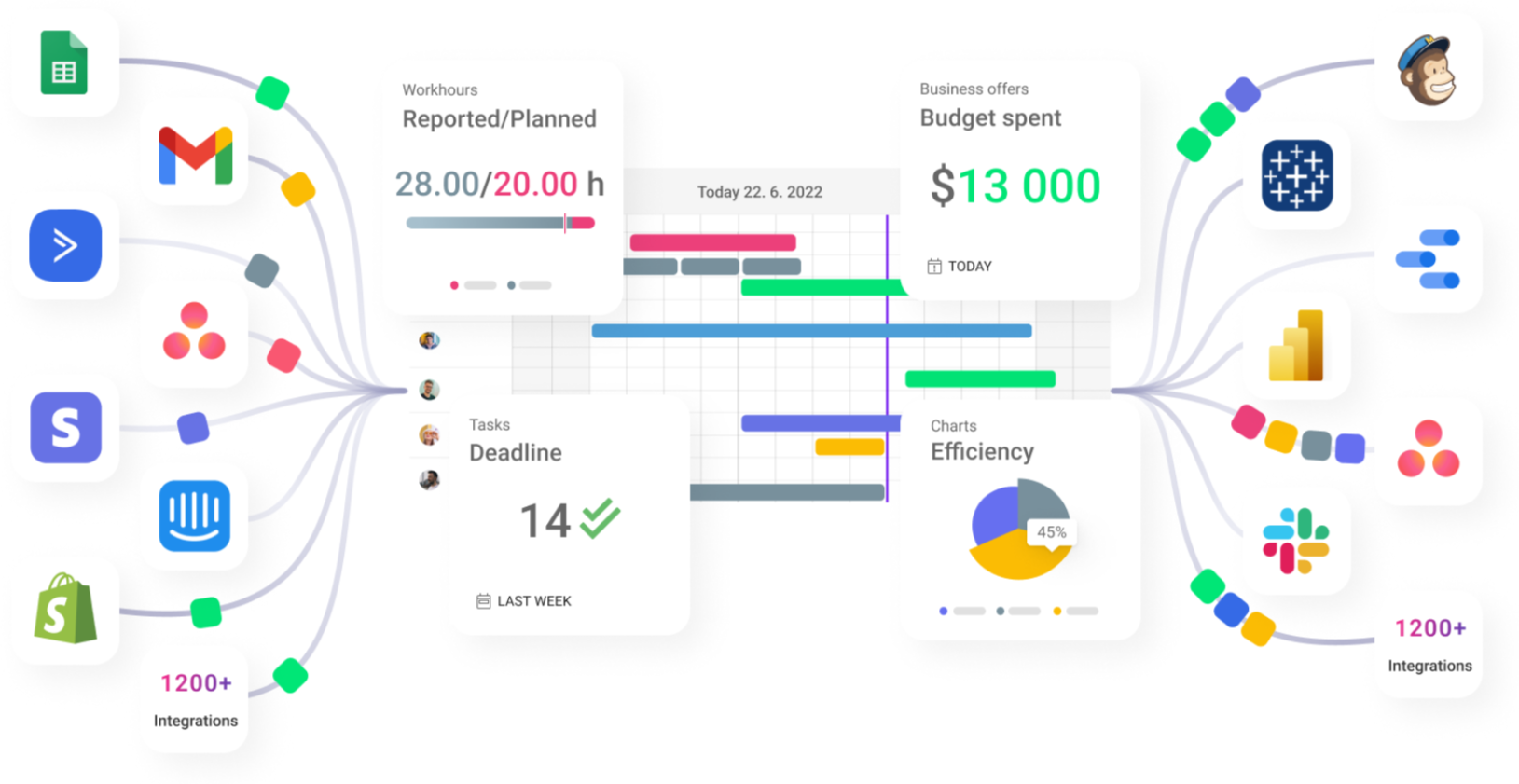Streamline your work with integrations using Boost.spaceA platform that centralizes and synchronizes company data from internal and external sources, offering a suite of modules and addons for project management, CRM, data visualization, and more. Has many features to optimize your workflow!
Video
The role of Boost.space is to seamlessly connect your apps/services with Boost.space systemA platform that centralizes and synchronizes company data from internal and external sources, offering a suite of modules and addons for project management, CRM, data visualization, and more. Has many features to optimize your workflow!, so you can concentrate on new tasks rather than repeating the same tasks again and again. Get back to what matters the most. There are 2000+ apps from which you can synchronize your data in Boost.space system.
In order to sync your data, you first need to have your system baselined. So before you start to build your integrations take a look at how to work with modulesa module is an application or tool designed to handle specific business functions, such as CRM, project management, or inventory. The system's modular architecture allows you to activate only the modules you need, enabling customization and scalability as your business requirements evolve., spacesIn Boost.space, a space is a subunit within a module that helps organize and categorize data, ensuring clarity even with large volumes. For example, within the Contacts module, you might have spaces like "Client Database" or "Supplier Database." Access to each space is restricted to users who have created it or have been granted access., and recordsIn Boost.space, a record is a single data entry within a module, like a row in a database. For example, a contact in the Contacts module or a task in the Tasks module..
The other articles in this category will give you the information you need to create your integrations and set things up.

How does it all work?
Choose the modulea module is an application or tool designed to handle specific business functions, such as CRM, project management, or inventory. The system's modular architecture allows you to activate only the modules you need, enabling customization and scalability as your business requirements evolve.
First, you have to choose a suitable module or you can create your custom module.
Connect
Then you need to make your connections. The whole process is very simple: a) create a new integration b) go through the integration settings c) map the fields and you’re done. A detailed step-by-step guide is available in this article.
PS: If you need to control data collision (which tools and data take precedence), this can be easily set up in the Data flow view.
Organize
Inside the Boost.space system, you work with centralized data from all your tools. You can work with data in different ways, enrich it, analyze it, and much more.
Share
Now there is nothing left but to set up which data will be sent to your third-party apps. This way you can easily keep them up-to-date. You can learn how to do that in this article.
Congratulations, you have just managed to synchronize your company’s data. Easy, right?
